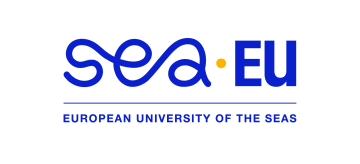Joanna Nakonieczna, researcher, molecular biologist, she was awarded the PhD degree in biological sciences in the field of biochemistry in 2007 on the basis of the dissertation "Structural and functional analysis of the restriction-modification enzyme Mmel from Methylophilus methylotrophus" (supervisor: prof. Tadeusz Kaczorowski); she obtained a postdoctoral degree in the field of natural sciences in the discipline of biological sciences in 2019 on the basis of a scientific achievement entitled "Identification of cellular factors important in the process of photoinactivation of microorganisms and development of a strategy to increase its effectiveness". Currently, she works as a professor at University of Gdańsk at the Department of Photobiology and Molecular Diagnostics.
ORCID no. 0000-0002-2420-664X
The research of the group focuses on understanding the interaction between one of the most important human pathogens, Staphylococcus aureus, and human skin.
The main research focus is based on:
Host-pathogen interaction studies. In the group we study bacterial factors that might be of importance in the process of human skin colonization. We are also interested in intracellular persistence of the pathogen in the human body. We are developing models allowing for better understanding the interaction of S. aureus and human corneocytes. We are, in particular, interested in a model of atopic dermatitis as an example of perfect colonisation niche for this pathogen as well as involvement of staphylococcal virulence factors in this process.
Development of novel anti-staphylococcal phototherapies. One of the novel approaches, with confirmed antimicrobial potential is antimicrobial photodynamic inactivation (aPDI). The basic principle of aPDI is that the combination of visible light, oxygen, and a small molecular weight compound (photosensitizer, PS) that is able to absorb and transfer energy or electrons to molecular oxygen generate reactive oxygen species (ROS). These broad-spectrum ROS can destroy critical microbial biomolecules. The application of light-activated compounds, particularly application of visible spectrum light penetrating deeper than UV light (e.g. the one used in phototherapies), constitutes the innovative and safe approach that we would like to develop as a topical antibacterial strategy.
Factors Determining the Susceptibility of Bacteria to Antibacterial Photodynamic Inactivation.
Rapacka-Zdończyk A, Woźniak A, Michalska K, Pierański M, Ogonowska P, Grinholc M, Nakonieczna J.Front Med (Lausanne). 2021 May 12;8:642609. doi: 10.3389/fmed.2021.642609. eCollection 2021.PMID: 34055830 Free PMC article. Review.
Ogonowska P, Gilaberte Y, Barańska-Rybak W, Nakonieczna J.Front Microbiol. 2021 Jan 11;11:567090. doi: 10.3389/fmicb.2020.567090. eCollection 2020.PMID: 33505363 Free PMC article. Review.
Ogonowska P, Nakonieczna J.Sci Rep. 2020 Oct 1;10(1):16354. doi: 10.1038/s41598-020-73409-1.PMID: 33004977 Free PMC article.
Kossakowska-Zwierucho M, Szewczyk G, Sarna T, Nakonieczna J.J Photochem Photobiol B. 2020 Mar 21;206:111863. doi: 10.1016/j.jphotobiol.2020.111863. Online ahead of print.
Nakonieczna J, Wolnikowska K, Ogonowska P, Neubauer D, Bernat A, Kamysz W.Front Microbiol. 2018 Aug 20;9:1949. doi: 10.3389/fmicb.2018.01949. eCollection 2018.
